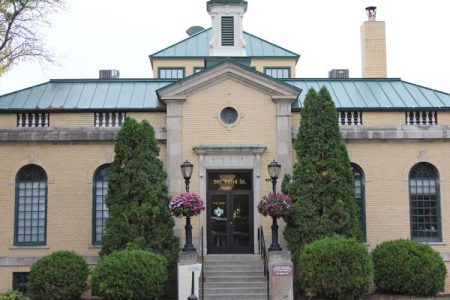Widgetized Section
Go to Admin » Appearance » Widgets » and move Gabfire Widget: Social into that MastheadOverlay zone
The Huge Challenges Facing the Local Government Workforce
The views expressed are those of the author and do not necessarily reflect the views of ASPA as an organization.
By Michael R. Ford
September 16, 2022

A recent policy report out of Wisconsin showed a sharp uptick in the number of individuals leaving the government workforce over the past two years. Notably the increase is not driven by retirements, rather, it is a result of working-age individuals taking their talents elsewhere. The changing government workforce is not just a Wisconsin problem, but a national challenge for all of us invested in getting the best and brightest into leadership positions in government. My own personal observations from almost daily work with local governments have convinced me we are in a period of transition that government managers, and the academic Public Administration (PA) community, has not quite figured out how to handle.
First, we are seeing the government workforce get younger. Much of this is a demographic change as baby boomers cycle out of the workforce. The personnel costs in my city, for example, have actually decreased after decades of upward pressure due to the influx of entry level employees. I have also noticed recent Masters of Public Administration (MPA) graduates getting high level jobs fresh out of school that, even five years ago, were not available. Of course there are advantages to a younger work force. It brings new ideas, people with fresh training and more potential representation to the day-to-day operations of government. At the same time, the loss of institutional knowledge will be an ongoing challenge.
Second, the relationship between manager and employee has fundamentally changed in many locales. Wisconsin, for example, dramatically limited collective bargaining for public employees a decade ago. Yet, many local government hiring, compensation and separation policies are based on policies and/or norms that were created in an era that no longer exists. This is not to say that the curtailing of collective bargaining was a net positive or negative, that is another conversation. But, it does highlight the reality that a whole generation of employees are coming into public organizations who never worked in the collective bargaining era (at least in Wisconsin). Other states have had similar structural changes in their local government workforce that are not fully represented in local government policies and procedures. To put it another way, a changing workforce is going to lead to changed policies and human resource norms.
Third, the role of diversity, equity and inclusion (DEI) is becoming more important to the nuts and bolts of running a government organization. I find there are still many senior level local government officials who, despite recognizing the importance of DEI, are uncomfortable talking about DEI issues or taking on DEI initiatives for fear of making a mistake and/or experiencing community backlash. Hence there is a tendency to outsource DEI to consultants and committees, which frames DEI as an external issue rather than one that needs to be part of daily operations. Here again things are changing. Younger workers trained in DEI are likely more comfortable with it, and communities are more attuned to viewing DEI as a core value that makes their municipality more attractive, and their government more successful.
Fourth, we are still dealing with one of the most impactful shocks to our governments in recent history, the COVID-19 disruption. There are the obvious issues such as the need for improved emergency planning and new modes of public communication that emerged from the pandemic. But, from an HR perspective, the pandemic is reshaping how we work. More municipalities are offering remote work options, for example, which requires a different set of management skills. Employee expectations are likely to keep changing in ways we cannot anticipate, and managers will have to adapt to attract the best and brightest.
Finally, the United States is facing a crisis of confidence in the basic institutions of democratic governance, including local government. The next generation of public employees must be prepared for the challenging career environment they are entering, but more importantly, must be willing to be part of the solution of reestablishing confidence in the level of government most likely to interact with residents on a daily basis. This is an awesome responsibility that I am ever more convinced is the best hope for the future of our country.
I realize I did not offer any solutions here, those will be forthcoming in future columns. But, I do think there is no time like the present to recognize the unique challenges facing the local government workforce. Our ability (or inability) to rise to these challenges will shape our democracy for years to come.
Author: Michael R. Ford is an associate professor of public administration at the University of Wisconsin Oshkosh, where he teaches graduate courses in budgeting and research methods. He frequently publishes on the topics of public and nonprofit board governance, accountability and school choice. He currently serves an elected member of the Oshkosh, WI Common Council.


Jim Bourey
September 18, 2022 at 12:52 pm
Another excellent column, Michael! Thanks for the important insights.
Jim Bourey